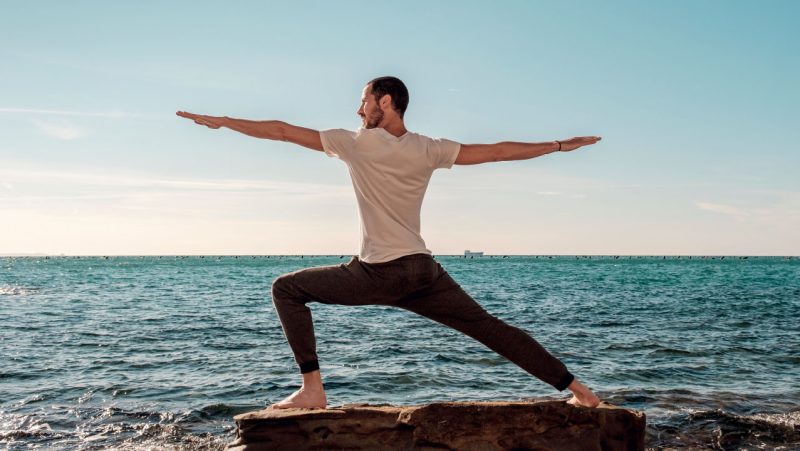
Making a Space for Chant in Your Yoga Practice
Unlocking the Spiritual Essence of Yoga with Vedic Chanting - By Elisabeth Sydor
Reading time: 3 minutes
What does chant have to do with yoga?
Most people think of yoga as physical––poses, or asana. But yoga means union––union of body, mind, and spirit. Chant, specifically Vedic Chanting*, can help lead to that state.
Chanting may seem irrelevant, even odd and exotic. At first, people may find the Sanskrit language difficult to master. But once embarked on, the study of Vedic Chanting can spark and deepen your practice in surprising ways.
Barbara G. first encountered chanting as an older student in advanced studies at The Yoga School New York (TYSNY). She discovered “a place her body had never been.” At first it was hard for her to pick up some of the sounds and the tongue movements. She would put her earphones in and sing along at the supermarket. She says, “The chanting and vibrating wake up every part of my body.” Chanting continues to be part of her daily practice.
For Catherine M., currently an advanced teacher trainee, it’s always been a challenge to focus her mind, whether in asana practice or meditation. “With chanting,” she says, “my mind cannot wander.”
Another advanced teacher trainee, Adriane D., was surprised to find that learning Sanskrit, meditating on the meanings of the words, was not boring. “It’s more like, yay I get to chant, get to do something powerful and good that clears my mind and gives me peace,” she says.
Vedic Chanting is an ancient practice more than 3,000 years old. It is considered the oldest unbroken oral tradition in existence. You do not need to be a Sanskrit scholar, or to have studied yoga before, to learn chant. While chanting is not specifically religious, it can be meditative, healing, and transformative. Chanting may:
- Help increase breathing capacity
- Enhance mental focus and memory
- Reduce stress, anxiety, and agitation, and induce relaxation
- Help practitioners find their clear, authoritative voice
- Nurture a sense of community among the chanters.
In the Krishnamacharya tradition which I study at TYSNY––my teacher studied directly with his son, T.K.V. Desikachar––chant is as fundamental a component of our study as asana, pranayama, and meditation. We learn that the bedrock of yoga, Patanjali’s Yoga Sutra, is rooted in the Vedas. [1]
These accessible sutras contain succinct maxims for us to contemplate and live by if we choose, ancient sayings that are meaningful and applicable in contemporary life—what yoga is and is not, how to attain it, and more––to guide us on our yoga path.
The Vedic Chants are songs of praise that can direct the modern student’s mind to essential aspects of nature and the universe. Working one–to–one or in a class, depending on the bhavana (intention) of the class, a mantra may be chanted at the beginning and close of the session. It may also be integrated into asana, or used during a visualisation.
At TYSNY, mixed–level chanting workshops are offered throughout the year. This year, the school will offer its first Vedic Chant Training Intensive, with hybrid classes about once a month. Open to beginners as well as experienced chanters, the course features an intro to Sanskrit pronunciation, and progresses to chanting exercises that gain in complexity throughout the studies, including several peace mantras, healing chants, and the famous Gāyatrī mantra from the Rg Veda.
Each day will start with a practice class that combines asana, pranayama, visualisation, and sound, focusing on that day’s particular mantra.
When I began my first 200 training, I was resistant to learning Vedic Chant. I could not see the connection to asana. My teacher patiently led us in call and response, made recordings for us to listen and work with, met with us one to one, and my fellow students gathered together on zoom sessions to chant together.
On my own, I would repeat the chants over and over. Gradually they became absorbed in my consciousness and now I can remember them at will.
Currently, my practice begins with a mantra praising the Sun. My mind turns to the warmth and power of the life–giving Sun, and with each breath I imagine infusing this image throughout my body, mind, and spirit. The chanting helps me turn my mind inward, and direct my thoughts to my breath and my movements. It invokes something larger than myself, and I experience calm as my ego and worries dissipate in the presence of enternal song. I cannot imagine my yoga practice or teaching my yoga students without integrating the practice with Vedic Chant.
By invoking the mantra-s, we connect with their ancient wisdom.
____________
Elisabeth Sydor is a writer and editor who studies yoga at The Yoga School NY, where she learns Vedic Chanting as part of her teacher training. This fall, the school will offer its first, year-long Vedic Chant training, at its studio on 23rd Street in New York City, and remotely.
[1] T.K.V Desikachar. 1995. The Heart of Yoga: Developing a Personal Practice. Rochester, Vermont: Inner Traditions International. p.145.
*commission earned from this link.







